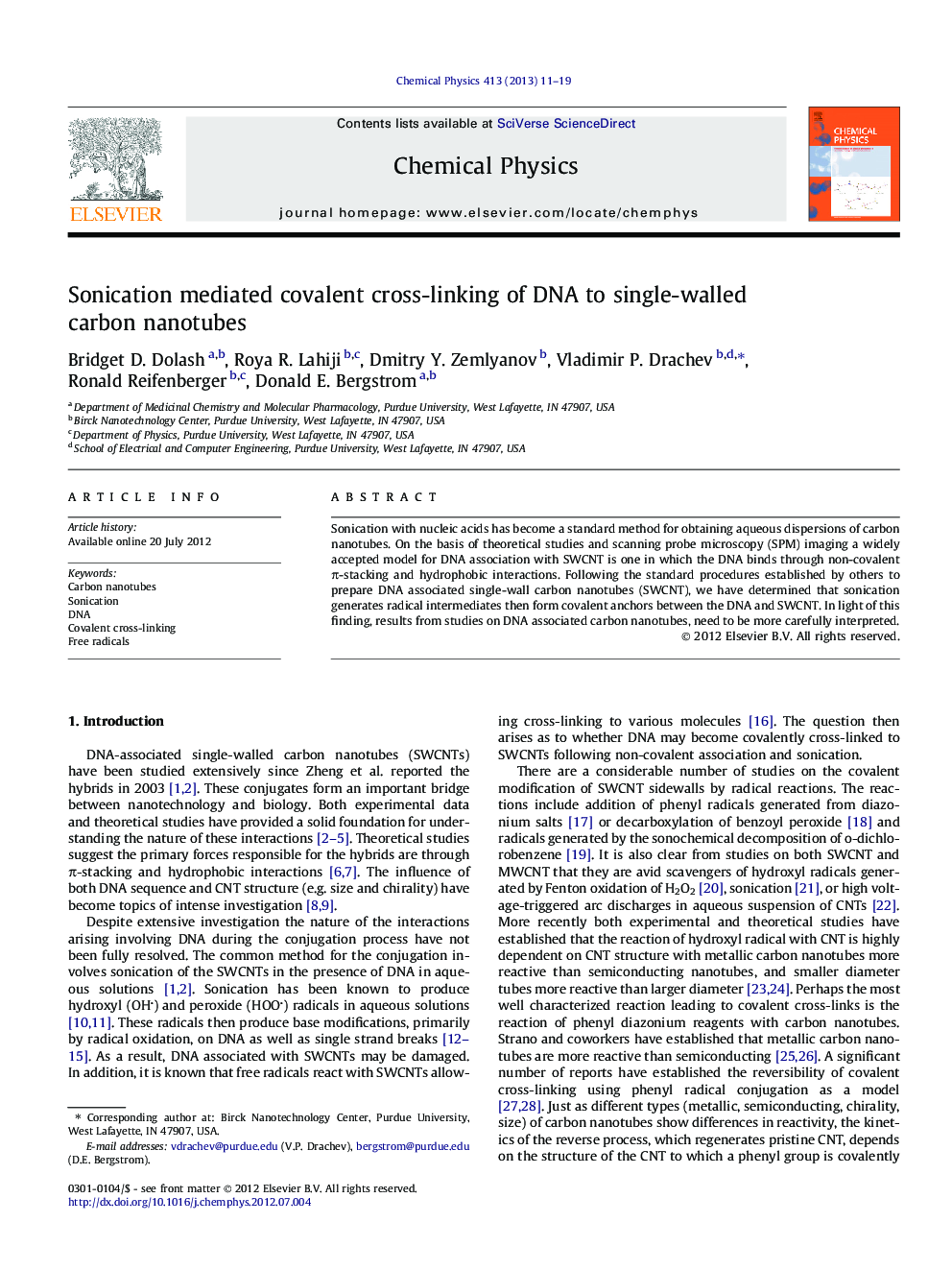| Article ID | Journal | Published Year | Pages | File Type |
|---|---|---|---|---|
| 5374012 | Chemical Physics | 2013 | 9 Pages |
Sonication with nucleic acids has become a standard method for obtaining aqueous dispersions of carbon nanotubes. On the basis of theoretical studies and scanning probe microscopy (SPM) imaging a widely accepted model for DNA association with SWCNT is one in which the DNA binds through non-covalent Ï-stacking and hydrophobic interactions. Following the standard procedures established by others to prepare DNA associated single-wall carbon nanotubes (SWCNT), we have determined that sonication generates radical intermediates then form covalent anchors between the DNA and SWCNT. In light of this finding, results from studies on DNA associated carbon nanotubes, need to be more carefully interpreted.
Graphical abstractDownload full-size imageHighlights⺠Sonication mediates dispersion and solubilization of carbon nanotubes by DNA in aqueous solution. ⺠Free radical inhibitors significantly suppress carbon nanotube solubilization. ⺠Evidence supports free radical mediated formation of DNA-CNT covalent cross-links.
